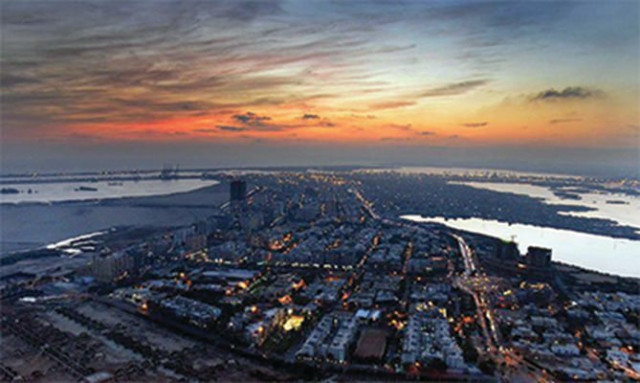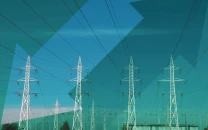Back towards stabilisation of economy
Growth target of 4.8% may not be achieved as govt itself tries to slow down pace

The recent hike in discount rate (the rate at which the central bank lends funds to commercial banks) by 150 basis points to 8.75% is a strong indication that once again the government’s economic policies will be geared towards stabilisation of the economy rather than accelerating its growth.
The growth-stabilisation trade-off has been a recurring theme in Pakistan’s economic history. At least three fundamental socio-economic characteristics of the country make it imperative to achieve rapid economic growth.
One, it is classified as a lower middle income economy, where the standard of living for an overwhelming majority of people is rather low. Two, demographically Pakistan is one of the youngest countries in the world, where more than 64% of the population is below the age of 29 years, while 27% is between 15 and 29 years. Three, Pakistan is the world’s fifth largest country and its population is growing at a high rate of 1.8%.
The combination of a predominantly young and fast expanding population means that every year an increasing number of people are joining the labour market. Already, at 65 million-plus, Pakistan has the ninth largest labour force in the world.
Pakistan’s journey on the road to economic growth has been a roller-coaster ride as periods of relatively high growth have been followed by years of economic stagnation or growth recession.
At the start of the century, the FY04-FY08 period was characterised by a high growth rate of 7.1% on average. However, that growth rate could not be sustained.
In the following five years, ie FY09-FY13, pro-growth policies had to be discarded in favour of stabilisation. As a result, the economy grew 2.8% per annum on average during that period.
The next five years (FY14-FY18) again saw the average annual growth rate increase to 4.7%. Again, that relatively healthy growth rate could not be sustained.
During FY19, the growth rate receded to 2.1% from 5.5% a year earlier while during FY20, the economy contracted 0.47%. However, during FY21, the growth regained momentum, as the economy grew 3.9%.
Encouraged by the growth revival, the government eyes 4.8% growth during the current financial year. However, it seems the target would be difficult to achieve, not least for the reason that the government itself now seems to be trying to slow down the growth pace.
As a rule, every government, including the one which puts stabilisation before growth, fully understands the importance of economic growth.
Every government, especially a popularly elected one, would love to create more job opportunities for the people and see rise in national income, for which an increase in output is essential.
Brakes on growth
Then why would a government deliberately put the brakes on growth? To answer this question, let’s turn to the difference between short-term and long-term or potential real economic growth.
Acceleration of short-term economic growth is undergirded by the increase in aggregate demand, while increase in long-term or potential economic growth is underpinned by the increase in productive capacity of the economy.
As a rule, in Pakistan high economic growth is accompanied by a relatively high external deficit.
Here is an example. A country, whose largest industry is textile, has the capacity to produce 50 million shirts a year. However, in a given year, only 35 million shirts may be produced given the size of the market.
If demand is projected to grow, for instance because the country has received great gobs of remittances from abroad, the industry will step up the production of shirts to say, 36 million. As the shirt output increases, the real short-term GDP will also expand.
In the next four years, the shirts’ output increases to 40 million on the back of an uptick in market demand. However, during these years, the production capacity stays at 50 million, as no new investment has been undertaken in the industry.
In case, the demand for shirts increases to 55 million, the country will have to import 5 million shirts to bridge the difference between domestic demand and domestic supply.
For the economy to register long-run economic growth, its capacity to produce shirts must go beyond 50 million a year. The same holds true for other major industries and the economy as a whole.
For the production capacity to go up, the level of savings and investment must also rise. Hence, the only way to sustain growth is to gradually increase the domestic production capacity, failing which demand-driven economic growth will end up increasing trade and current account deficits, which will put pressure on the balance of payments and foreign exchange reserves.
Price rise
The increase in domestic demand, if not accompanied by the expansion of production capacity, will also drive up the general price level.
A stage will soon arrive when in the face of the mounting, and unsustainable, external deficits or a sharp increase in the rate of inflation, which irks people, especially the electorate, the government will be forced to pursue demand compression policies to slow the pace of economic growth.
To lend credence to our analysis, let’s juxtapose Pakistan’s economic growth with the external deficit in recent years. During FY04-FY08, the high average 7.1% GDP growth was accompanied by an average 3.3% current account deficit as a percentage of GDP.
During FY09-FY13, the lacklustre 2.8% economic growth led to a fall in the current account deficit to 2.1% of GDP. As the economy grew at a faster rate of 4.7% in the next five years, the current account deficit-GDP ratio also rose to 2.8%.
The last three years (FY19-FY21) have witnessed a combination of low growth (1.8%) and lower external deficit (2.3%). Thus FY04-FY08, the period of highest growth, was also the period of highest current account deficit in recent years.
Over these years, the investment-to-GDP ratio has remained stagnant or declined. On average, the ratio, which was 18.3% during the 1990s and 17.9% during the 2000s, declined to 15.6% in the last 10 years (FY12-FY21).
Most recently, the first four months of current financial year have seen $5.08 billion in current account deficit, which is 4.7% of GDP (compared with the $1.31 billion surplus recorded in the corresponding period of previous year), accompanied by a steep depreciation of the rupee in recent weeks, and coupled with 9% and 9.2% Consumer Price Inflation in September and October 2021 respectively.
This unenviable combination probably forced the government to switch back to stabilisation policies, such as an increase in the benchmark interest rate.
The moral of the story is that without a significant increase in the productive capacity of the economy, even a moderately high growth rate will be difficult to sustain and the country will continue to oscillate between pro-growth and stabilisation policies.
The writer is an Islamabad-based columnist
Published in The Express Tribune, December 6th, 2021.
Like Business on Facebook, follow @TribuneBiz on Twitter to stay informed and join in the conversation.


















COMMENTS
Comments are moderated and generally will be posted if they are on-topic and not abusive.
For more information, please see our Comments FAQ